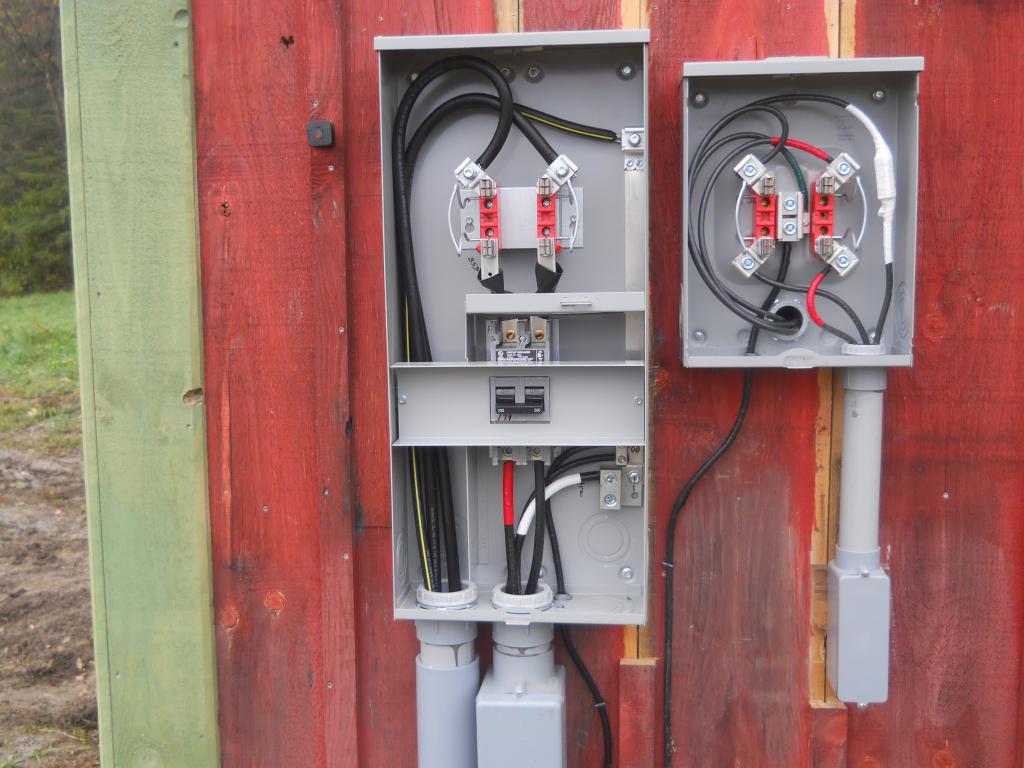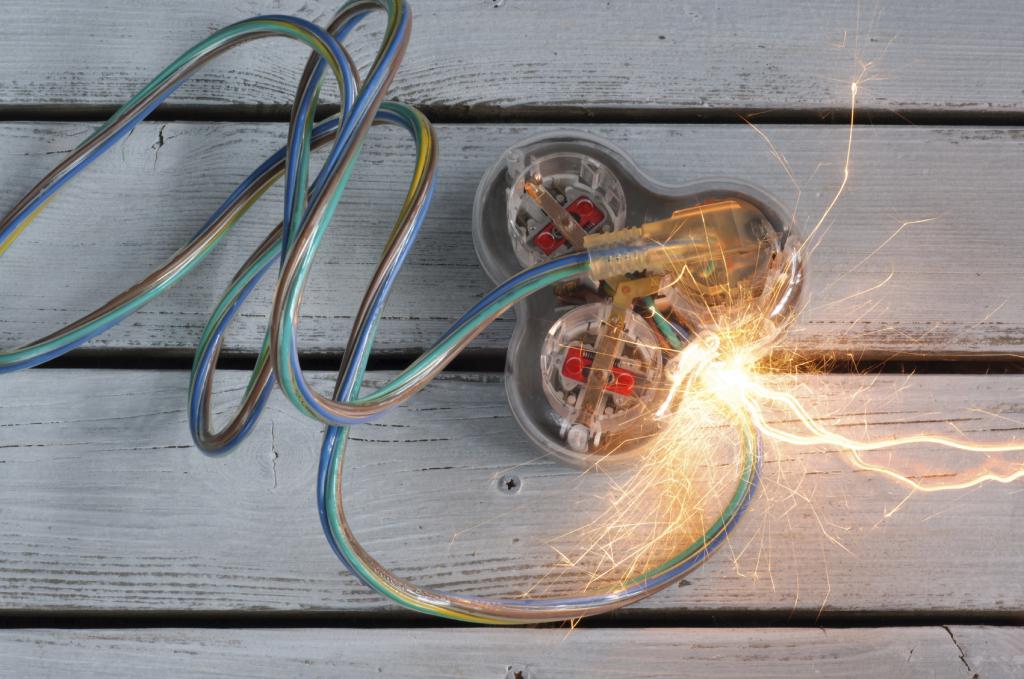The article will talk about how electricity is brought into the house from a pillar by a SIP wire through a pipe rack or underground. It is worth paying attention to the fact that the total capacity of all consumers who are in the house can be very impressive. For this reason, input is the most vulnerable point; installation errors cannot be made in any way. In our article you will learn how to lay the cable, and most importantly, which one should be used. And it will also be mentioned how the electricity distribution scheme is properly organized.
Power Distribution Principle
First you need to determine what an electrical input is. This is the boundary between the two areas of power supply - external and internal. This is the same line that connects the home and municipal parts of the electricity supply. Therefore, to know how to make the entry of electricity into the house from a pillar with your own hands is extremely important. Indeed, in this particular area the highest load. Therefore, the requirements for arranging input are the highest. The input resource is three times lower than the wiring in the house itself.
Judging by the experience of electricians, there are several connection points:
- In 95% of cases, private houses are connected to the power supply from the poles of the power transmission lines.
- Not more than 1-2% of cases - to collector nodes of underground cable routes.
- In approximately 3-4% of cases, the connection is made to the low buses of transformer substations.
Complex distribution schemes
There are more complex connection options when a tie-in is made into a line of cables using branching couplings. In this case, it is necessary to equip a new technological well or overhead collector. In practice, a similar input scheme is implemented quite rarely.
Approach to the counter
The electrical wiring that goes directly to the meter should be visible, no connections are allowed. This is due to the fact that it was not possible to relieve voltage bypassing the meter. In order not to make acts of hidden work and not to seal boxes with connections, metering devices are installed on the facade of the house.
At this point, the inspector has free access to the meter. The continuity of the lead-in wire is also very simple to check. Electricians advise installation in this way.
Responsibility Section
It is on the meter that you can carry out the division of responsibility between the supplier and consumer of electricity. The meter and all the lines that connect to it belong to internal supply projects. But the input of electricity into the house from the pillar with a SIP wire or any other is a service sector of urban electricity networks.
Disputes may arise at this point, as the electricity supplier does not allow the supply until the meter is sealed. And since the meters are set exclusively by distribution network workers, the consumer has difficulty installing the outgoing line. The ideal option is the installation of all internal wiring and the output of the cable to the facade of the house for connection to the central power supply line.
Internal work
During the installation of internal power supply, it is necessary to make a temporary input in order to perform gating, drilling and commissioning. Therefore, first you need to make the so-called temporary input, and only after the installation of all internal connections is complete, you can open the meter and connect to the line through it. Of course, after commissioning, the meter must be sealed.
By the way, the seal is paid, it can be accompanied by various bureaucratic delays. For simplicity, an IP55 junction box is placed next to the meter in which wiring is made. Sometimes it is allowed to install the distribution unit directly from the meters. In this case, it will be convenient to make several entries. For example, one is for a house, the second is for street lighting, the third is for a garage or summer kitchen.
How to choose a cable
It is worth noting that the introduction of electricity into the house from a pole with a cable of a very large cross-section is impractical to do if there are few energy consumers. Therefore, let's decide which wires can be used and which cannot. Immediately, we note that it is forbidden to lay aluminum wires in a hidden way in rooms. Therefore, to organize the input and internal electrical wiring, wires are used, in which solid copper conductors, for example PV-1 or VVG. They are conveniently laid in plastic or steel pipes.
Many believe that the internal cable should have a conductive capacity equivalent to an input line that is connected to the municipal network. But this approach cannot be called true, since with a total power of 3-4.5 kW, 16 sq. mm (just such a cross section is minimal for SIP wires), frankly speaking, it is disadvantageous. Therefore, you need to make sure that the safety factor is about 1.3 when calculating the current cross-section of the wire.
Electricians advise using wires with a cross section of 2.5 or 4 square meters when laying the input. mm, maximum - 6 square meters. mm Accordingly, the setting currents for input automata are 25 A, 32 A, 40 A.
How to choose a cable management system
It should be borne in mind that the cable that carries out the input of electricity into the house is subjected to high loads and heat. Therefore, it is necessary to protect it by all means from the effects of atmospheric phenomena, damage. And if laying on a combustible base is performed, then it will be necessary to protect the wire from ignition. Be sure to adhere to the norms when entering electricity into the house underground.
As for the route, it depends on where the house panel or distribution unit is located. In the event that the end point is on the outer wall, it would be more reasonable to run the cable along the facade from the meter. This is most conveniently done under a roof overhang. It is recommended to tighten the cable into a polyethylene pipe or corrugation.
As for laying in the attic or in the basement of the basement, this can only be done after the cable is protected by a plastic or steel sheath. It is allowed to carry out installation both in an open way and in walls or ceilings.
If the accounting node is deleted
Some electricity supply companies have recently been practicing the installation of metering stations outside of households. As a rule, this happens when preventing the theft of energy. Sometimes, of course, the reason is the high length of the line extending from the meter. In this case, by the way, it is necessary to take into account all the losses that may be in the conductors.
Electric power transmission with a voltage of not more than 1 kV is made using a 0.4 kV high-voltage transmission line having self-supporting insulated wires. Quite rarely, cables are laid underground. This is done only when it is impossible to make an air line (or undesirable).
Please note that the introduction of electricity into the house from a pillar underground is quite practical - the wires will not spoil the appearance of the structure. There is also no chance of cable breakage in strong winds. By the way, cables that are laid underground can be carried indoors. But SIP can not be used in buildings. The reason lies in the fact that the polyethylene shell is very poor at coping with overheating. And to lay an underground line of labor will not be enough - there are enough trenches in the ground, 20 cm sand cushions and shells as protection (HDPE pipe). And then the shell is needed only if the cable does not have its own reservation.

When working with overhead lines, it is necessary to make a smooth transition to the wire used for laying indoors. Please note that SIP is an aluminum wire, while inside the house you need to use copper. To eliminate the formation of oxides, terminal connections with insulating lubricants are used. It is also allowed to use open screw pads.
How to serve input
The very first thing that needs to be done after installation is to test the resistance of the insulation layer, as well as the zero-phase loops. If the tests gave a satisfactory result, then the main shield and input can be allowed for operation. Six months after installation, it is absolutely necessary to tighten absolutely all screw connections - start from the circuit breaker that is installed to the meter, and finish with clamps on the switchgear.

Once every five years it is necessary to carry out a constriction, and if oxidation is detected, purification is mandatory. At about the same frequency, you need to inspect the wires, identify damage. Putting can last about 30 years. After this period, a thorough examination of the cable is necessary. If there are reflows on the insulating layer, drying out, the appearance of a crunch in the cable, then this indicates that the conductors do not cope well with the load that affects them. Therefore, it is recommended to replace the input with a more powerful one.
These are approximate verification times. If you notice damage in the early stages, it is recommended to check the condition of the entire cable, if necessary, replace it. The best way out of the situation is the calculation and installation of a new input. Moreover, you need to make a power margin of about 25-30%, so that the wires cope with any peak loads.